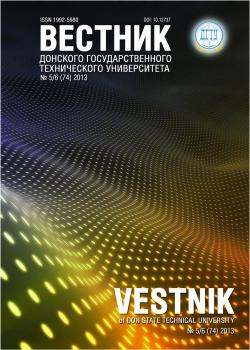A problem of selecting the controlled parameter values of the com-bine harvester work tools is considered. Models describing the har-vesting quality factor dependencies of the external agents are ana-lyzed. The need of a new approach to modeling the technological ad-justment process of the harvester in the field which takes into ac-count the fuzzy information on the environmental factors, its approx-imate character, as well as an expert method of generating infor-mation, is justified. To describe the environmental factors and the performance indices, linguistic variables are introduced, their mem-bership functions are developed, and production rules are formulat-ed. The fuzzy inference process is illustrated by an example of se-lecting the beater rate speed. A knowledgebase and an inference en-gine that form the expert system basis are created. The use of such a system in the field allows reducing the process downtime and crop waste. A practical implementation of the developed model is the cre-ation of the software for the automated problem solution of the tech-nological adjustment of the harvester in the field
combine harvester, technological adjustment, fuzzy knowledge, linguistic variable, expert system
Introduction. The implementation of the potentialities included in the design of the combine harvester, achievement of
high quality performance of harvesting and productivity are only possible with a correct technological adjustment of working
units and observance of operating rules. Complex and changing environmental conditions grain harvesters operate under re-quire the operator to find optimal solutions promptly. Non-optimal decisions, made in the field, downtime due to technical and
technological reasons result in substantial loss of resources and potentialities [1].
1. Rybalko, A.G. Osobennosti uborki vysokourozhaynykh zernovykh kul´tur. [Some features of harvesting high-yielding grains.] Moscow: Agropromizdat, 1988, p.120 (in Russian).
2. Vetrov, E.F., Genkin, M.D., Litvin, L.M., et al. Optimizatsiya tekhnologicheskogo protsessa po statisticheskim dannym. [Optimization of technological process according to statistic data.] Mashinovedenie, 1986, no. 5, pp. 48-55 (in Rus-sian).
3. Vetrov, E.V., Tchernyavskaya, V.P., Bobrineva, G.F. Optimal´noe regulirovanie zernouborochnogo kombayna. (El-ektronnyy «Sovetchik kombaynera»). [Optimal adjustment of combine harvester (Electronic journal «Sovetchik kombainera»)] Proceedings, 4/89. Moscow: NPO VISKhOM, 1989, pp. 80-85 (in Russian).
4. Litvin, L.M., Zhalkin, E.V., Vetrov, E.F. Obobshchennaya otsenka zonal´nykh pokazateley raboty zernouborochnykh kombaynov. [Generalized estimation of zone operational performance of combine harvesters.] Tekhnika v sel´skom khozyaystve, 1989, no. 5, pp. 41-45 (in Russian).
5. Yerokhin, S.N., Reshetov, A.S. Vliyanie tekhnologicheskikh regulirovok na poteri zerna za molotilkoy kombayna Don-1500. [Technological adjustment effect on grain loss after Don-1500 combine separator.] Mekhanizatsiya i elektrifikatsi-ya sel´skogo khozyaystva, 2003, no. 6, pp.18-19 (in Russian).
6. Tsarev, Y.A., Kharkovsky, A.V. Perspektivy ispol´zovaniya elektronnoy sistemy upravleniya v kombaynakh «Don» i «Niva». [Prospects of using electronic control system in combine harvesters “Don” and “Niva”.] Traktory i sel´skokho-zyaystvennye mashiny, 2005, no. 1, pp. 37-38 (in Russian).
7. Averkin, A.N., et al., Pospelov, D.A., ed. Nechetkie mnozhestva v modelyakh upravleniya i iskusstvennogo intel-lekta. [Fuzzy sets in control and artificial intelligence models.] Moscow: Nauka, 1986, 312 p. (in Russian).
8. Asai, K., Vatada, D., Sugeno, S. Prikladnye nechetkie sistemy: Per. s yapon. [Applied fuzzy systems: Transl. from Japanese.] Moscow: Mir, 1993, 368 p. (in Russian).
9. Tugengold, A.K., Tishin, A.S., Lysenko, A.F. K voprosu formirovaniya sistemy znaniy pri intellektual´nom el-ektronnom dokumentirovanii mekhatronnykh ob´´ektov. [On knowledge system formation in intelligent electronic documenta-tion of mechatronic objects.] Vestnik of DSTU, 2012, no. 3, pp. 30-36 (in Russian).
10. Zadeh, L.A. Fuzzy sets. Information and Control, 1965, vol. 8, pp. 338-353.
11. Zadeh, L.A. Knowledge representation in fuzzy logic. An Introduction to Fuzzy Logic Applications in Intelligent Systems, The Springer International Series in Engineering and Computer Science, vol. 165, R.R. Yager, L.A. Zadeh, Eds. New York: Springer, 1992, pp. 1-27.
12. Dimitrov, V. P., Borisova, L.V. Teoreticheskie i prikladnye aspekty razrabotki ekspertnykh sistem dlya tekhnich-eskogo obsluzhivaniya mashin. [Theoretical and applied aspects of developing expert systems for machines maintenance.]Rostov-on-Don: DSTU Publishing Centre, 2007, 202 p. (in Russian).
13. Borisova, L.V. Metodika modelirovaniya predmetnoy oblasti «tekhnologicheskaya nastroyka» v nechetkoy post-anovke. [Modeling technique of the subject domain “technological adjustment” in a fuzzy formulation.] Proceedings RASKhN, 2005, no. 6, pp. 62-65 (in Russian).
14. Koffman, L. Vvedenie v teoriyu nechetkikh mnozhestv. [Introduction into the theory of fuzzy sets.] Moscow: Ra-dio and communication, 1982, 432 p. (in Russian).
15. Malyshev, N.G., Berstein, L.S., Bozhenyuk, A.V. Nechetkie modeli dlya ekspertnykh sistem v SAPR. [Fuzzy models for expert systems in CAD.] Moscow: Energoatomizdat, 1991, 136 p. (in Russian).
16. Makarov, I.M., Lokhin, V.M., Manko, S.V., Romanov, M.P. Iskusstvennyy intellekt i intellektual´nye sistemy up-ravleniya. [Artificial intelligence and intelligence control systems.] Moscow: Nauka, 2006, 333 p. (in Russian).
17. Dimitrov, V. P. O metodike defazzifikatsii nechetkoy ekspertnoy informatsii. [On defuzzification method in fuzzy expert information processing.] Vestnik of DSTU, 2010, vol. 10, no. 6 (49), pp. 868-878 (in Russian).
18. Shtovba, S.D. Proektirovanie nechetkikh sistem sredstvami MATHLAB. [Designing fuzzy systems with MATH-LAB facilities.] Moscow: Goryachaya liniya - Telekom, 2007, 288 p. (in Russian).





